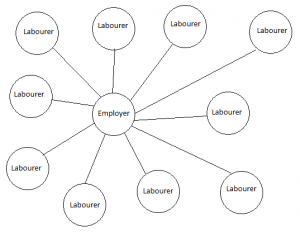People Working for Less Than the Minimum Wage
India has been battling poverty since her independence in 1947. Poverty has clearly been one of the biggest problems in the nation. Many steps have been taken by the government over the years, various plans have been introduced out of which the Mahatma Gandhi National Rural Employment Guarantee Act (NREGA) has been the most promising one. It guarantees at least 100 days of paid work to the people in rural areas. Even though the Indian government has taken steps to alleviate poverty, 268 (23% of the population) million people lived on less than $1.90 a day in 2011 in India.
The floor level for the daily minimum wage in India is around ₹160 (about $2.4), which is still very low. It can be justified by the fact that cost of living is very low, consumption per capita is also low etc., but surprisingly, many people, especially laborers, work for as low as ₹10 (about $0.15) a day. This can be attributed to the huge bargaining power of the employers. Since the unemployed, poverty-stricken population is very high, employers exploit this to their advantage. If a network graph were to be drawn, it would look something like this:
Suppose, the employer needs only 3 laborers, then there are too many people competing for employment which gives employer great bargaining power over laborers. Hence, the employer can negotiate down the cost of labor significantly. Even though this bargaining is considered to be forced labor under the Minimum Wages Act of 1948, it is not enforced by the government strictly. The laborers are not well informed about their rights and are stuck in this vicious cycle of poverty.

